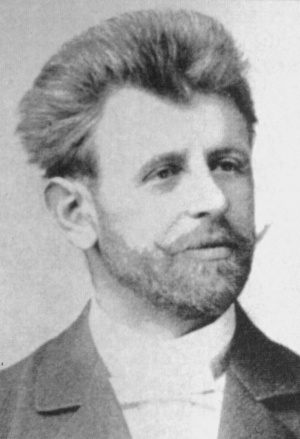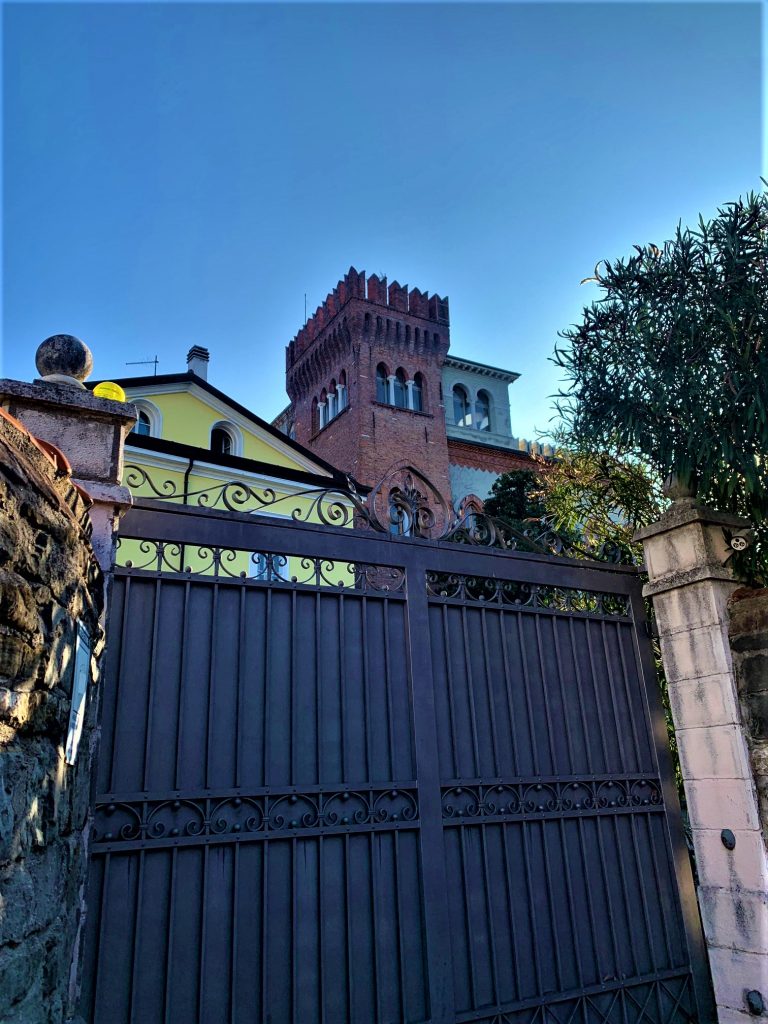by Alessandra Ressa
Not many know that at the corner of via Don Minzoni with via Bellosguardo, in San Vito’s residential neighborhood stands an imposing, castle-like mansion which belonged to a famous German astronomer, Johann Nepomuk Krieger.
For years he would observe the Moon with his telescope from the villa’s tower. His studies in Trieste became famous worldwide. They were considered so important that one of the Moon’s craters was later named after him.
The mansion, named Villa Pia after his wife, was built in 1892 by an architect Isidoro Piani on the San Vito hill, an area (unimaginable today) considered at that time far from the city center, surrounded by cultivated fields and woods.
Its remoteness and the darkness that enveloped it made it the perfect spot to observe the Moon, which was Krieger’s obsession. He spent night after night in his special observatory to capture every little detail with his sophisticated photographic instruments. He then added charcoal sketches on the prints to report every minuscule characteristic observed.

The famous astrophysicist was born in 1865 in a small town in Bavaria. At the age of 20 he sold his father’s brewery and went to Munich to study Astronomy. In 1895 he moved to Trieste because he believed it to be the best location to observe the sky. He chose the beautiful villa in San Vito located in Via Alice 6 (later renamed via Minzoni). At that time, the mansion did not have the castle-like eclectic aspect you can marvel at today. Its architecture was more Viennese.

Krieger had a tower built, where he positioned a Reinfelder telescope, a very expensive and modern machine that helped him design his unique method of observation. The mansion soon became known as Pie-Sernwarte, Pia observatory.
In 1898 he succeeded in publishing the first volume of his Atlas. No astronomer before had produced such meticulous work based on the observation of the Moon. His hopes to complete the maps of the whole lunar surface were unfortunately shattered when his health, heavily compromised by night after night spent in the bitterly cold observatory, began to decline.
The year was 1901. He was diagnosed with tuberculosis and forced to move to a climatically milder Sanremo, where he died a year later, at the age of 37, leaving a young wife and child behind. His Atlas was eventually completed in Vienna in 1912 and in 1935 a Moon crater was named after him.

Before he left to Sanremo, Krieger, probably aware that he would not return to his beloved Trieste anymore, donated his expensive Reinfelder telescope to the Imperial Astronomical Observatory (Castello Basevi), today’s Istituto Nazionale di Astrofisica in via Tiepolo, where it is still safely preserved to this day.
Villa Pia underwent major renovations in 1912 and lost its austere look to adapt to the eclectic fashion of the time. It became a castle-like mansion, with battlements to surround the tower that had once been Krieger’s observatory. Its access gate today is from via Bellosguardo 46 and is dominated by high security cameras.

The mansion was later bought by the Hirn family, who then changed their name into Irneri in 1926. The Irneri are best known as the founding family of the insurance company Lloyd Adriatico. The property has not changed since.




























